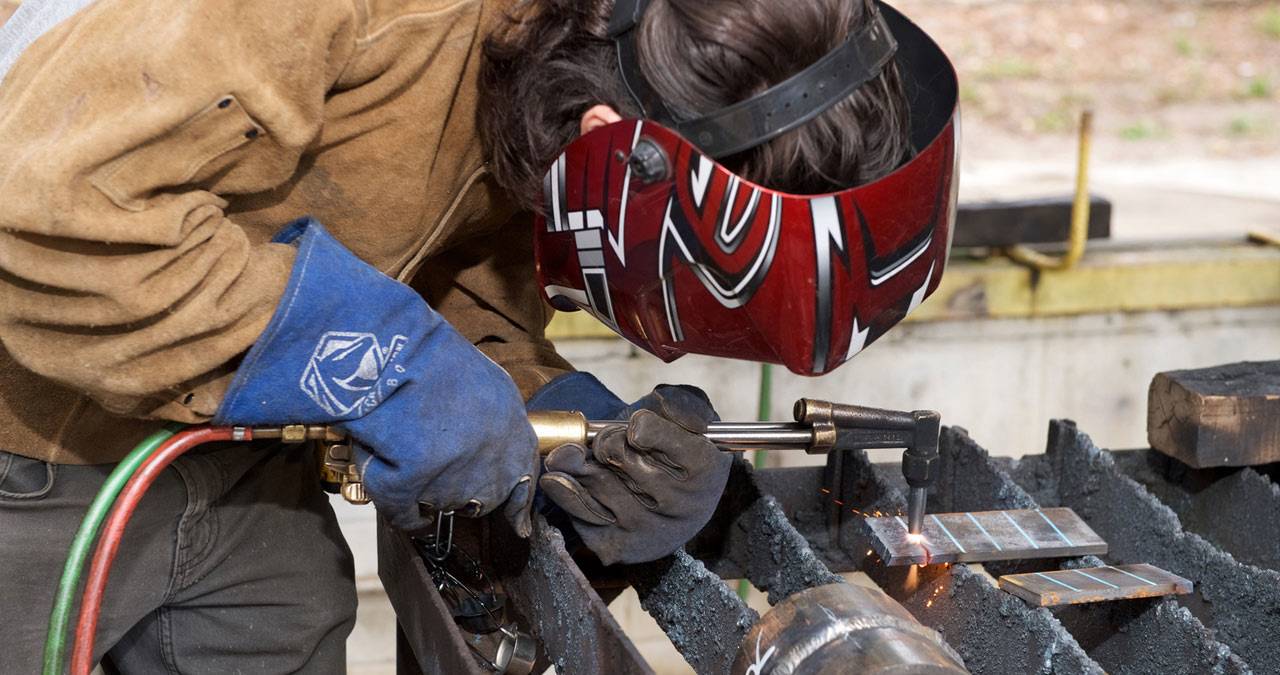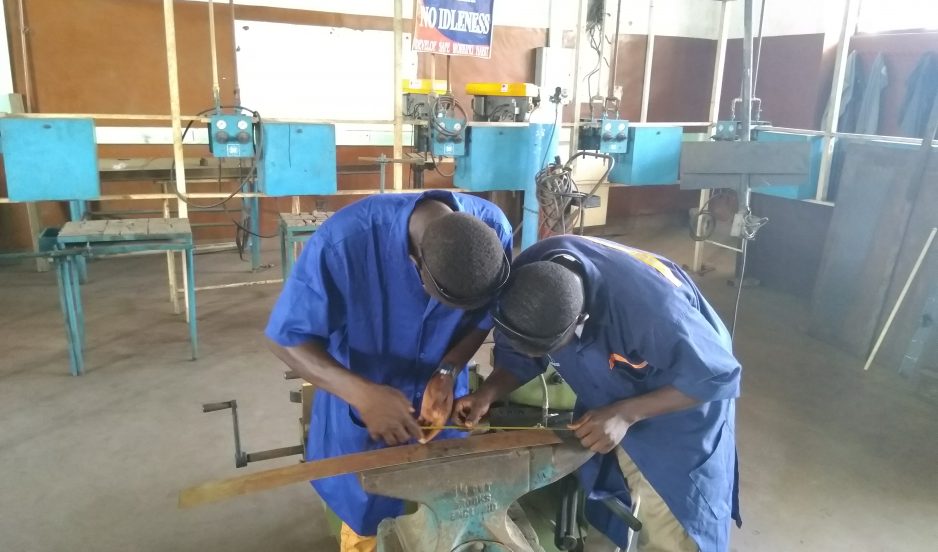A guide to perfect fusion with Montana Mobile Welding and Repair Belgrade Fabrication
Wiki Article
Everything about Welding: Key Insights Into Techniques and Ideal Practices for Success
Welding encompasses a selection of methods, each matched for specific materials and applications. Comprehending these techniques, such as GMAW, SMAW, and TIG, is crucial for attaining excellent results. The right equipment and security methods can not be overlooked. As preparation and repairing play essential roles in the welding procedure, grasping these components can substantially improve the top quality of the end product. What are the vital variables that assure an effective weld?Recognizing Various Welding Techniques
Welding strategies incorporate a range of techniques, each suited to specific applications and products. Among one of the most typical techniques are Gas Steel Arc Welding (GMAW), Shielded Steel Arc Welding (SMAW), and Tungsten Inert Gas Welding (TIG) GMAW, also referred to as MIG welding, is prominent for its speed and convenience, making it suitable for thin products. SMAW, or stick welding, is favored for its simpleness and performance in outdoor settings, specifically with thicker steels. TIG welding offers accuracy and control, making it appropriate for intricate work and non-ferrous metals (Montana Mobile Welding and Repair Fabrication). Each method has its unique advantages and factors to consider, enabling welders to select the most effective approach based on the project's needs, product type, and desired outcomes. Comprehending these techniques is crucial for effective weldingNecessary Welding Devices and Devices
While various welding methods need certain skills, the ideal tools and tools are just as necessary for achieving top quality outcomes. Vital welding devices includes welding makers, which differ depending upon the method-- such as MIG, TIG, or stick welding. Safety gear, including aprons, gloves, and helmets, guarantees security and comfort during the procedure. In addition, clamps and components help safeguard products in place, ensuring accuracy in welds. Consumables like welding poles, wire, and protecting gas are likewise crucial parts that affect the high quality of the weld. Tools such as grinders and cutters assist in surface preparation and post-weld completing, contributing to a professional outcome. Purchasing high-grade tools ultimately boosts the efficiency and effectiveness of welding tasks.Safety And Security Practices in Welding
Proper safety techniques are essential in the welding sector to shield workers from prospective risks. Welders need to use ideal individual protective tools (PPE), including safety helmets with appropriate shading, handwear covers, and flame-resistant apparel. Appropriate ventilation is vital to reduce direct exposure to dangerous fumes and gases generated throughout the welding process. Additionally, workers should be educated in the appropriate handling of welding devices to stop accidents. Fire security actions, such as maintaining combustible materials far from the welding area and having fire extinguishers readily available, are necessary. Regular assessments of devices and offices can aid identify potential threats before they result in crashes. By adhering to these safety methods, welders can develop a much safer working environment and minimize risks linked with their trade.Preparing Products for Welding
Preparing materials for welding is a crucial action that considerably affects the top quality and integrity of the end product (Montana Mobile Welding and Repair Fabrication). Appropriate preparation involves cleansing the surfaces to get rid of pollutants such as oil, dirt, and corrosion, which can jeopardize the weld. Techniques such as grinding, sanding, or utilizing solvents are typically employed to accomplish a tidy surface. In addition, making sure that the products mesh comfortably is essential; gaps can cause weak welds. It's additionally important to take into consideration the alignment and positioning of the components, as this will certainly impact the simplicity of welding and the final result. Lastly, choosing the appropriate filler material and making sure compatibility with the base metals is necessary for achieving strong, long lasting weldsTips for Getting High-Quality Welds
Achieving premium welds needs interest to information and adherence to finest techniques throughout the welding procedure. Proper joint preparation is crucial, making certain surfaces are clean and cost-free from pollutants. Selecting the suitable filler product and welding strategy based upon the base steels is crucial for perfect bonding. Keeping consistent traveling speed and angle while welding can avoid issues and advertise uniformity. Additionally, controlling heat input is essential; extreme heat can result in warping and weakened joints. Regularly checking the welds during the procedure permits instant modifications if required. Finally, using suitable post-weld treatments, such as cleansing and anxiety alleviation, can boost the durability and stability of the weld, ultimately making sure a successful outcome.Repairing Common Welding Issues
Welding typically presents challenges that can affect the high quality and honesty of the end product. Common concerns such as porosity, irregular weld grains, and overheating can arise, each calling for certain fixing methods. Comprehending these problems is vital for welders to improve their skills and achieve excellent outcomes.Porosity Troubles Discussed
Although porosity can frequently be ignored, it stays a crucial issue in welding that can jeopardize the integrity of an ended up item. Porosity describes the existence of tiny gas pockets within the weld bead, which can lead and weaken the joint to early failing. This trouble generally emerges from contaminants, moisture, or inappropriate securing gas coverage during the welding procedure. To mitigate porosity, welders need to validate that the base materials are clean and completely dry, use proper securing gases, useful site and keep constant welding criteria. Routinely checking the equipment and environment can likewise assist recognize potential concerns prior to they materialize in the weld. Addressing porosity properly is crucial for accomplishing strong, durable welds that satisfy top quality standards.
Irregular Weld Beans
Irregular weld beads can significantly affect the top quality and toughness of an ended up product. Numerous elements add to this problem, consisting of improper travel rate, wrong amperage settings, and irregular electrode angles. When the welder relocates too promptly, a grain might appear narrow and lack penetration, while moving too gradually can create extreme build-up. In addition, using the incorrect amperage can result in either damaging or excessive spatter, both of which concession weld stability. The welder's technique, such as irregular lantern activity, can additionally lead to uneven grain appearance. To minimize these troubles, welders should concentrate on maintaining constant, controlled movements and ensuring appropriate equipment settings to attain harmony in their welds. Consistency is vital to achieving strong and reputable welds.Getting Too Hot and Warping Issues
Extreme warmth throughout the welding procedure can bring about significant overheating and contorting problems, impacting the Home Page structural integrity of the workpiece. These troubles typically materialize as distortion, which can jeopardize placement and fit-up, making further setting up testing. Factors adding to overheating consist of the option of welding criteria, such as voltage and travel speed, as well as the sort of product being bonded. To minimize these concerns, welders need to maintain consistent traveling rate and appropriate warmth input while keeping track of the workpiece temperature. Additionally, preheating or post-weld warmth treatment can aid alleviate tensions triggered by quick cooling - Belgrade. Regular evaluation and adherence to ideal practices are essential in stopping getting too hot and making certain the longevity and dependability of bonded frameworksRegularly Asked Inquiries
What Are the Career Opportunities in the Welding Industry?
The welding market provides diverse job possibilities, including positions as welders, examiners, instructors, and engineers. Professionals can work in production, construction, aerospace, and automotive markets, taking advantage of solid demand and affordable salaries in numerous roles.Just How Can I Improve My Welding Speed Without Giving Up High Quality?
To improve welding speed without giving up top quality, one must practice effective strategies, preserve equipment, enhance settings, and boost hand-eye sychronisation. Normal training and seeking comments can additionally considerably add to attaining faster, high-grade welds.What Certifications Are Available for Welders?
Various qualifications exist for welders, including those from the American Welding Culture (AWS), the National Center for Building And Construction Education and Research Study (NCCER), and different industry-specific organizations. These stainless flux core wire credentials enhance employability and demonstrate skill effectiveness.Just How Does Welding Affect the Properties of Metals?
Welding affects the homes of metals by altering their microstructure, which can bring about modifications in toughness, solidity, and ductility. Warm input and cooling rates throughout the process considerably affect these product attributes.Can I Weld Dissimilar Metals With Each Other?

Report this wiki page